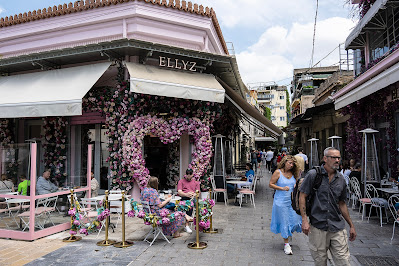Last summer, while helping move my mother from the Chesapeake Bay to an assisted living community in Austin, Texas near my sister, my three siblings and I sat in my parents' sunroom sorting pictures and letters before the house was sold. It was painful to cull family photos, and there were thousands of them. Letters were even worse.
Generations of photographs ended up in my parents’ attic, where it was too hot in the Virginia summer to work, so we hauled decaying bins downstairs and sat, each of us with boxes for keepers and garbage bags for tossers. At the end of summer, the house sold, we left Virginia with photos of ourselves and our kids. I became the keeper of the family archive because I had enough room in the back of my Subaru.
This summer, Ellen and I are tackling our own attic, sorting and tossing, preparing to move to New Mexico after over twenty years in our Laramie house. Like my parents, we’ve accumulated extended family histories and our own: photos of Bei growing up, letters from friends and family, journals, artwork, climbing magazines, books, diplomas, annotated calendars.
In Sally Mann’s autobiography, “Hold Still,” she begins with boxes in her own attic, lamenting:
“They had come to my attic in stages—first from Larry’s parents and grandparents and then from my father and mother—and they had not been opened since the deaths that necessitated boxing up a life. In them was all that remained in the world of these people, their entire lives crammed into boxes that would barely hold a twelve-pack.”
-Sally Mann from Hold Still
Years ago, Ellen received a box in the mail from the nuns who had cared for her Uncle Bob in his later years. It’s been in our attic ever since, the last belongings of a man who lived a full life, married, worked for Boeing, but never had kids. By the time he died in his nineties, he had no other family, and Ellen had stayed in touch, so she became the keeper of his things and the carrier of that burden.
Part of what we are saving for Bei are photographs and documents from before she was old enough to form lifelong memories—her early childhood, the year spent in China when she was five, her adoption. I’m certain that some of her “memories” come directly from these images rather than from actual experience.
“Photography would seem to preserve our past and make it invulnerable to the distortions of repeated memorial superimpositions, but I think that is a fallacy: photographs supplant and corrupt the past, all while creating their own memories. As I held my childhood pictures in my hands, in the tenderness of my “remembering,” I also knew that with each photograph I was forgetting. --Sally Mann from Hold Still
Our memories can be as much formed by photographs as captured by them, and photos are an interpretation by the photographer rather than perfect rendition of a moment. Discarding an old photo is like erasing a memory.
Recently, I sorted a banker’s box densely packed with letters from old friends spanning my life from college well into the recent past. Despite being dirtbags in our 20s and 30s, we were prolific writers, before emails and texts replaced letters and post cards. In those days, I was immersed in rock climbing culture, and the letters capture adventures with friends in Yosemite, Indian Creek, Europe, Thailand, and a hundred other places. They also remind me of how bonded we were--sleeping on each other’s floors, lamenting failed romances, and reveling in our freedom before dispersing in our 40s. I recycled some of the letters and kept others. They'll mean little to Bei and I’ll be unlikely to read them again once they're back in boxes in whatever attic we own next. But throwing them away felt like excising part of my life.
The late David Roberts, in his book about his audacious ascent of Mt. Huntington in Alaska as a young man in the 1960s, wrote:
“A man’s best moments seem to go by before he notices them; and he spends a large part of his life reaching back for them, like a runner for a baton that will never come. In disappointment, he grows nostalgic; and nostalgia inevitably blurs the memory of the immediate thrill, which, simply because it had to be instantaneous, could not have lasted.” David Roberts from The Mountain of My Fear
There’s more to it for me than nostalgia, and I’m far from disappointed with the path I’ve taken, but fear of mortality gnaws a little as I look back at youth from my mid-60s. Milan Kundera wrote:
“To be mortal is the most basic human experience, and yet man has never been able to accept it, grasp it, and behave accordingly.” -from Immortality
"Behaving accordingly" might be exhausting, and maybe our photographs, letters, and other of life’s flotsam, carefully stored in our attics, is an effort to be just a little immortal, remembered for a while longer than we would be without that evidence that we were here.
Jane Shilling, writing for The Daily Mail while decluttering uncertainly after her son left for college observed:
“When you write letters, either by email or on paper, you write, without knowing it, your life story, and one rarely emerges well from the account. But it is the human condition to be ridiculous and I may as well embrace it...Cupboard space is precious in a house as small as mine. But so are memories. And just at the moment, I can’t decide which I need more.”
































